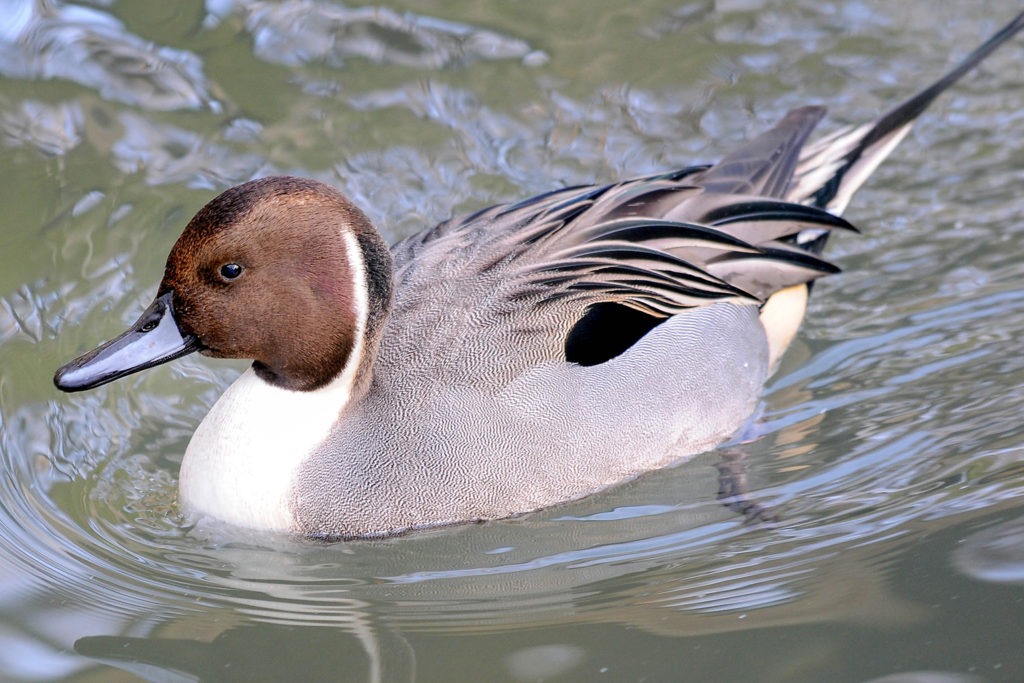Overview
“Where I live”
Northern pintail are widespread across many types of habitat during the summer breeding season, but seem to prefer prairie and tundra habitats that provide shallow lakes, ponds, and marshes. They spend winters in coastal wetlands as well as inland waters, and can be seen on the Chesapeake Bay in winter.
You can see Northern pintail at The Maryland Zoo in the Marsh Aviary in the Maryland Wilderness exhibit.
“How I live there”
Pintails dabble and tip-up to feed on the seeds and nuts of moist-soil and aquatic plants. They can spend up to six seconds with their heads underwater. Because of their longer necks, they can feed in deeper water than can most dabbling ducks. They also eat waste grain and can be found feeding alongside mallards in fields of corn and grain. They are predominantly vegetarian, although females increase their intake of invertebrates during laying and nesting season. Pintails are opportunistic feeders that will take whatever is available in the habitat they find themselves in.
“Making my mark”
Northern pintail are particularly graceful, slim, long-necked ducks that are easily recognizable in silhouette.
“What eats me”
Because pintail nests are often visible, eggs and nestlings are especially vulnerable to predators and thousands of pintail nests are lost to predators each year. Northern pintail are also hunted for sport in the United States.
There are many species of mammal, reptile, and bird that prey upon eggs and ducklings of waterfowl species. The list of predators varies by species and by where that species lives, but the list of prevalent waterfowl predators in North America includes red fox, raccoon, owls, hawks, large gulls, mink, weasels, skunks, coyotes, and crows.
Raising Young
Most Northern pintails pair up before winter ends and spring migration begins. Once they reach their breeding grounds, pairs choose a nesting site. Females nest in shallow depressions on the ground, often without much cover, well away from water’s edge. They line their nests with grass and down and lay their eggs at a rate of one per day. Males usually abandon their mates when incubation begins. Clutch size varies from three to twelve eggs and the incubation period is a relatively short 21 days. Nestlings fledge in about 35 to 45 days.
Conservation
Northern pintail are not endangered and remain one of the most abundant ducks in North America, but populations are well below optimal levels. More than any other North American waterfowl species, they have suffered from persistent drought and loss of wetlands habitat in their breeding grounds. This species is hunted in many parts of its range, including for sport in the United States.
Taxonomy
- Kingdom: Animalia
- Phylum: Chordata
- Subphylum: Vertebrata
- Class: Aves
- Order: Anseriformes
- Family: Anatidae
- Genera: Anas
- Species: acuta


